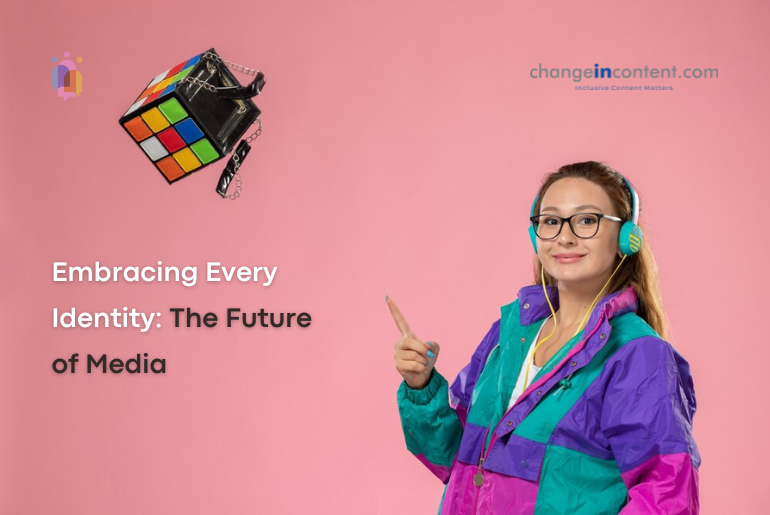In a world where stories and images profoundly shape our societal fabric, the mission to integrate gender inclusivity in media and advertising becomes critically urgent. Beyond the conventional binary views of male and female lies a rich mosaic of identities. Each of these identities is deserving of recognition; each story is yearning for a spotlight. This effort transcends mere diversification of narratives. Indeed, it challenges the very core of how we perceive identity, belonging, and acceptance within the vast tapestry of human experience.
A call for comprehensive representation
Gender portrayal as strictly male or female has long dominated mainstream discourse. Most narratives exclude the gender identities that exist beyond the defined construct of a happy family consisting of a man and a woman. Therefore, there is a pressing need for a paradigm shift. Inclusive content catalyses meaningful social change by championing inclusivity, acceptance, and representation for all individuals, regardless of their gender identity.
As per the latest census in 2011, over 487 thousand people in India identified as the third gender. Therefore, a brand that makes the right kind of noise also gains a valuable chunk of consumers.
Spotlight: Bhima Jewellery’s narrative of acceptance
A quick Google search takes us to the Bhima Jewellery ad, which is a beautiful story about the transitioning of an awkward teenage boy into a lovely woman. The one-minute-40-second video charts the story. Meera Singhania Rehani acted as the trans-woman model.
The Kerala-based jewellery house Bhima beautifully weaves in their product as a symbol of love and acceptance that the protagonist receives from her family. Every milestone in her life coincides with the receipt of gold jewellery from her loved ones. What is also beautiful is the presence of the father, even before the transition begins. An awkward teenage boy with prominent facial hair receives a set of payal from her parents. This acceptance is unconditional. It defies patriarchy.
The title of the ad is “Pure as Love”. The ad has been viewed more than a million times on YouTube in the last two years and has received rave reviews.
However, a quick search also shows that there are hardly any ads which feature trans-men or trans-women as models. We understand that the story of a transition is poignant. But why not also look at the talent pool and be inclusive by hiring more models from the trans community? Of course, there are sporadic activities by brands. But it is so minuscule that we cannot really call the existing advertising landscape inclusive.
Trans-Men: An invisible spectrum
The lack of visibility of trans-men within media and advertising landscapes is glaring. One hardly comes across a popular character in a show or an ad where a trans-man portrays the character. There is no doubt that our historical, cultural, and societal dynamics influence such a phenomenon.
Transwomen are more prominently featured in media and popular culture, reflecting societal norms regarding gender representation. Transgender men are often less visible. Also, this is due to their identities challenging traditional notions of masculinity and societal expectations.
Beyond “Coming-out stories”: Exploring the trans discourse
We find a sense of scratching the surface in storytelling. Most media narratives are based on ‘Coming-out stories’. These are a small part of the broader spectrum of the ‘trans discourse’. Also, there is a tendency to sensationalise content. There is a lack of authentic engagement in mainstream media. In most of the media coverages, we see the same faces, who are well-known trans activists. The media does not really explore the not-so-prominent members of the community and their issues.
Stereotypes and misconceptions
Stereotypes and misconceptions about transgender individuals also is a concern. Transgender women are often sensationalised or fetishised. In contrast, transgender men are overlooked or misrepresented. Efforts to enhance representation and advocacy for transgender individuals, irrespective of gender identity, are crucial for fostering greater acceptance and understanding within media and advertising spheres. By challenging stereotypes and promoting inclusivity, we can strive towards more equitable and diverse portrayals of transgender experiences.
Conclusion: Towards a more inclusive future
Standing at the crossroads of tradition and transformation, we at changeincontent.com advocate for gender inclusivity in media. The call for gender inclusivity in media invites us toward a horizon of endless possibilities. This journey demands more than mere passive acknowledgement. It calls for active, persistent efforts to dismantle the barriers of binary narratives. Our collective quest ensures that every voice finds its echo and that every identity is seen and celebrated. Let this thought be the spark that ignites a global movement. A movement towards creating a media landscape where inclusivity is a reality woven into the very essence of every story we tell.
Disclaimer: The views expressed in this article are based on the writer’s insights, supported by data and resources available both online and offline, as applicable. Changeincontent.com is committed to promoting inclusivity across all forms of content, which we define broadly to include media, policies, law, and history—encompassing all elements that influence the lives of women and gender-queer individuals. Our goal is to promote understanding and advocate for comprehensive inclusivity.


